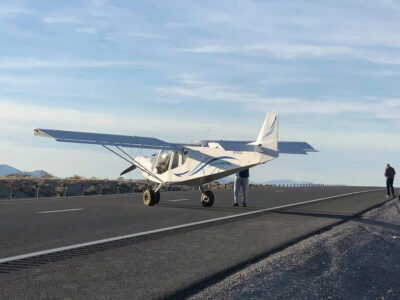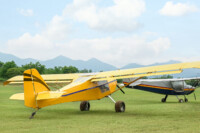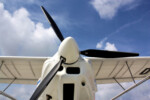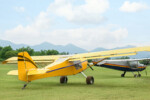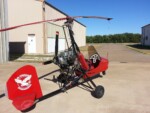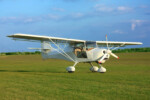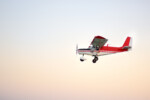Can You Take Off And Land An Ultralight On A Road?
25 May 2023 | Updated on February 05, 2024
Flying an ultralight is the equivalent of riding a motorbike in the sky because they provide a fun and thrilling flying experience that conventional airplanes can not match. Ultralight aircraft are not required to operate from airports, with many typically taking off and landing in small airfields. Some ultralight owners even open grassy fields, which the law allows in several states. However, can you take off and land your ultralight on a road?
Join us as we explore the question and discuss why it may be necessary, including the legal implications.
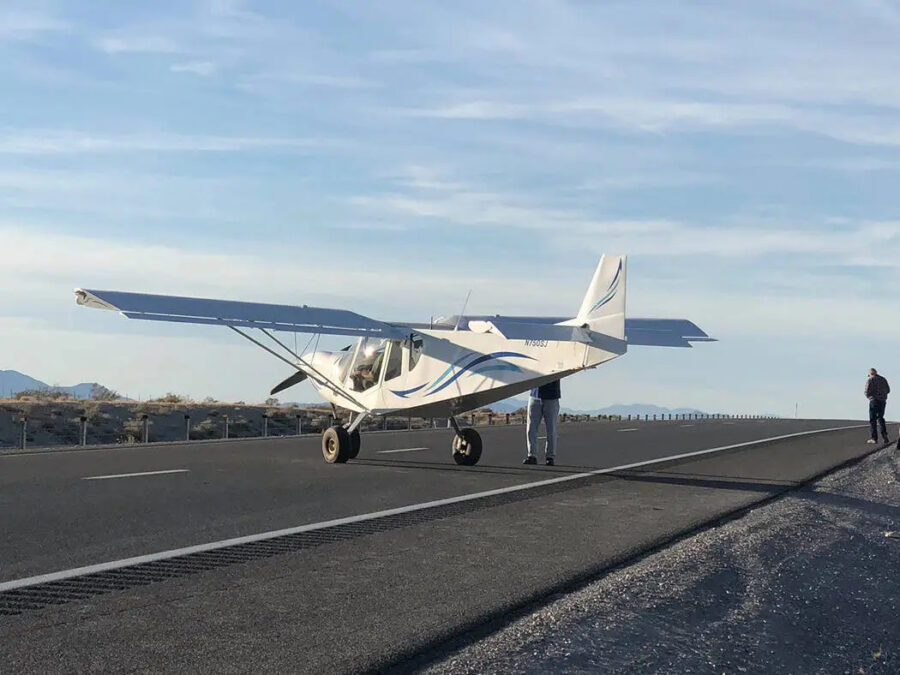

Photo by Ryan Muccio
Important Disclaimer: The information and data provided here are for informational purposes only, and are subject to change over time. We strive to provide the most current and relevant information, but the dynamic nature of the topics discussed may result in changes that are not immediately reflected in our content. We recommend our readers to conduct their own research and consult with professionals when making significant decisions based on the data or information provided here. Your reliance on the information in this post is solely at your own risk.
Can You Take Off and Land an Ultralight on a Road?
No federal laws prohibit or allow ultralights to take off and land on the road. But do not think about flying your ultralight aircraft from public roads just because public officials typically don’t encourage such behavior. Before delving into the practicalities of landing an ultralight on roads. It will be a great idea to explain what an ultralight aircraft is to individuals with no notion of one.
According to Federal Aviation Authority FAA regulations, an ultralight vehicle is a single-seat aircraft weighing less than 254 pounds (115.2 kg), empty, has a maximum 5 gallons fuel capacity, an airspeed not exceeding 55 knots (102 km/h; 63 mph). Additionally, the FAA provides special exemptions for ultralight vehicles, which enhances their hobbyist appeal among recreational flyers, making them ideal for backcountry flight operations.
Ultralight pilots commonly take off and land on roads where possible. However, we wouldn’t recommend using a busy highway as a runway unless in emergencies. Road rules for ultralight aircraft take off and landing depend on your state and local laws.
While it is common for ultralight aircraft to take off and land on empty public throughways and remote private dirt roads in rural Montana and Alaska, large cities with busy highways have strict restrictions.
Below are some examples of regulations restricting ultralight aircraft use on roads across the United States:
Local laws in Upstate New York require approval to land on throughways, plus a $300 permit fee.
According to Section 24.022. USE OF AIRCRAFT ON ON COUNTRY ROADS law, ultralight vehicles can land on roads under the following provisions:
- A commissioner’s court of a county may enact ordinances to ensure the safe use of county roads by aircraft.An ordinance may limit the kinds of aircraft that may use the roads.
- Establish the procedure that a pilot shall follow before using a road, including requiring the pilot to furnish persons with flags at both ends of the road to be used.
- Establish other requirements considered necessary for safely using the roads by aircraft.
- A pilot who follows the ordinances adopted under Subsection (a):(1) may land or take off in the aircraft on a county road; and(2) is not subject to the traffic laws of this state during the landing or takeoff.
Local rules in remote, sparsely populated areas with large open spaces may be loosely enforced, but it is best to familiarize yourself with them.
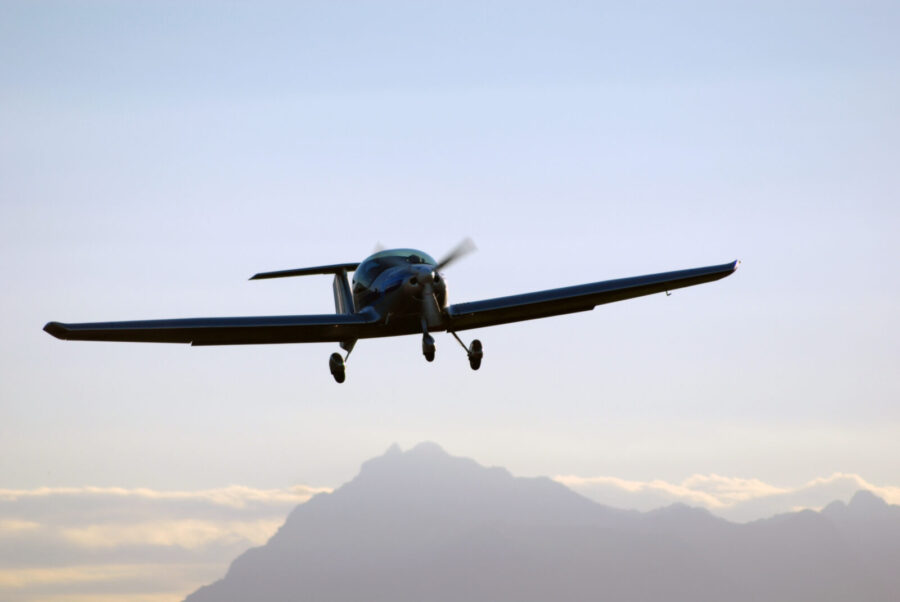

Factors to consider when taking off or landing an ultralight on a road
Depending on the location and circumstances, taking off and landing on a public highway can be one of the most harrowing experiences for an ultralight pilot. Whether you are on a routine flight or an emergency, below are some critical considerations for ultralight pilots using roads as makeshift runways.
- Road factors: roads and highways are designed for vehicles, not aircraft operations. Ultralight pilots face unique challenges when determining road suitability for take off and landing procedures. These include the road length, width, condition, and additional considerations:
- The road gradient and layout. Straight, smooth roads are more suitable as makeshift runways than hilly roads with curves.
- Traffic density.
- Driver concentration.
- Obstacles like power lines, traffic lights, and signs.
- Take off factors: pilots must consider temporary obstructions and permanent obstacles like tree branches, speed bumps, traffic signs, and power lines before taking off in an ultralight. In addition, safety precautions like observing wind direction provide the pilot with a suitable take-off approach.
- Landing factors: ultralight pilots must determine if the road has sufficient length for a safe landing. Other important considerations include the presence of crosswinds and road surface conditions.
- Legal and regulatory considerations: largely depend on the local laws in your area. Some jurisdictions may allow certain roads as temporary ultralight runways on specific days, e.g., weekends. You must coordinate with local aviation officials and comply with the necessary fees, permits, or licenses to avoid legal problems.
Where can you land an ultralight?
A major attraction of ultralight aviation is the freedom to operate from virtually any uncontrolled space. By uncontrolled, we mean locations with no restrictions to specific aircraft by aviation authorities. Ultralights offer unparalleled flexibility in landing locations, and pilots have been known to take off and land on almost any smooth surface.
Check out our popular places to take off and land your ultralight aircraft:
- Roads: yes, you can take off and land your ultralight on roads and highways if you do not violate local rules and ordinances. Unpaved roads, including gravel or dirt roads, are suitable as makeshift runways for ultralight operations so long as the surface is smooth and there are no visible obstacles.
- Grass airfields are short and typically unpaved runways in remote or rural areas. Their easy access and lower costs make them excellent alternatives to airport runways.
- Uncontrolled airports and airfields: you can take off and land your ultralight on a Class G airport or other non-towered airports with paved runways and hangar facilities. These are more expensive than grass airfields, but they offer maintenance and storage space.
- Seaplane base: amphibious ultralight aircraft can land on bodies of water when equipped with floatation devices, allowing them to move safely on rivers, bays, harbors, or lakes.
- Private property: you can take off and land your ultralight aircraft on personal property. Large farmlands and level grazing fields are excellent landing options if you have the property owner’s approval and watch out for stray cattle.
Ultralight runway length
Ultralight aircraft are designed for short landing rolls covering a shorter runway length than conventional aircraft. An ultralight needs about 100 to 300 feet (30 to 90 meters) of runway length to safely land, less than the total surface area of a large grassy field where ultralights commonly take off and land. Also, ultralight’s slow stall (landing) speeds of around 30 to 40 mph (48-64 km/h) help pilots keep the aircraft under control, preventing further landing roll during an engine failure.
You must know that an ultralight aircraft’s landing distance depends on critical factors that pilots must consider before buying or flying an ultralight vehicle:
- The ultralight aircraft’s design;
- The ultralight aircraft’s weight;
- The ultralight aircraft’s landing speed;
- Wind conditions during landing, like tailwinds and crosswinds, affect the aircraft’s ground speed and touchdown point on the runway;
- Modifications to ultralight aircraft, like floats, increase drag and the required runway length.


Can ultralights land at airports?
The FAAs airspace restrictions for ultralight flight operations determine airport access for ultralight aircraft. It means ultralight pilots are prohibited from landing within the lateral boundaries of the surface area of Class A, Class B, Class C, Class D, or Class E airspace designated for an airport unless they receive approval from air traffic control ATC officials having jurisdiction over the airspace.
Landing your ultralight at smaller Class G airports is allowed, though. But we recommend having a 2-way radio onboard for ground communications and following landing instructions. ATC officials at major airports are unlikely to grant an ultralight landing request unless in emergencies.
Can ultralights land on private roads?
Unless in situations where a shotgun-armed property owner confronts you, no one can stop you from landing your ultralight aircraft on someone’s private road. Ultralight clubs and enthusiasts groups commonly use private roads and properties for their shows and flight gatherings. However, you will need the owner’s explicit (written) permission to use their roads as your makeshift runway, or you could be accused of trespassing.
Landing an ultralight on a private road comes with several risks because roads are primarily designed for vehicle use, not aircraft operations. It is crucial to check the road for obstacles and objects that could pose safety risks or damage your ultralight aircraft.
Where can I fly in an ultralight?
You can fly your ultralight anywhere so long you stay within 14 FAR Part 103 operating rules for ultralight vehicles. They include flying your ultralight outside restricted airspace, staying below 1,200 feet above sea level and 700 AGL near major airports, and obeying the right-of-way instructions to avoid commercial aircraft.
Other requirements include the following:
- Do not operate your ultralight vehicle over congested areas.
- Do not operate your ultralight vehicle over a prohibited or restricted area without approval from the controlling authority.
- Do not operate your ultralight vehicle in areas designated in a Notice to Airmen under 91.141 or 91.143 unless authorized by ATC.
- Only fly into major airports with prior approval.
With careful planning, you can take your ultralight aircraft on a cross-country recreational flight if you maintain visual reference with the surface and observe flight visibility and cloud clearance requirements.
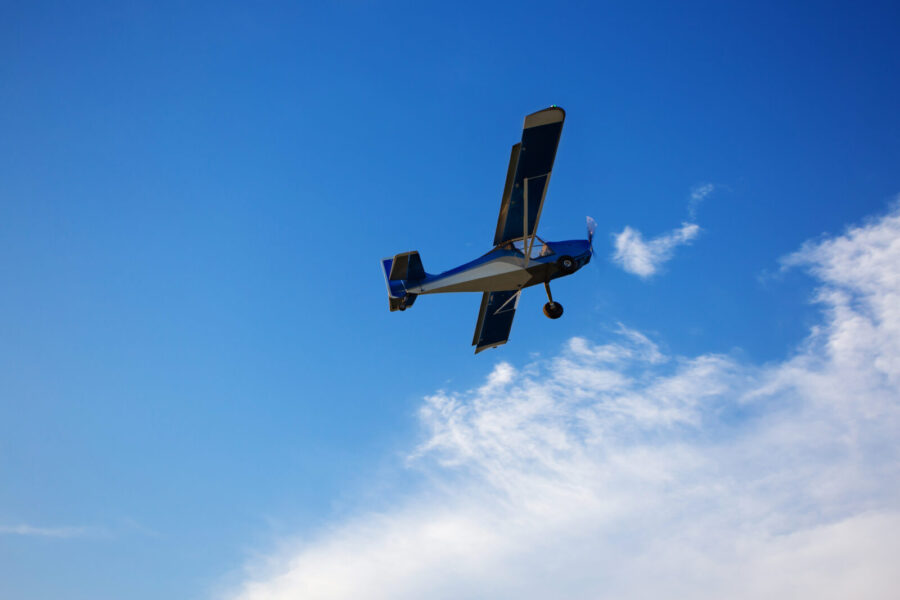

Conclusion
With careful planning, you can land your ultralight on the road under the right conditions while adhering to all relevant aviation regulations. Ultralight pilots must ensure the safety of the surrounding environment and individuals by observing all necessary safety procedures when taking off or landing on a busy highway or remote dirt road.




















